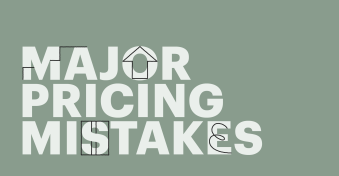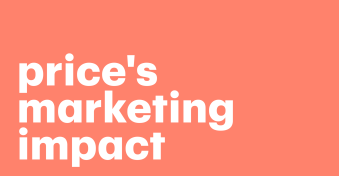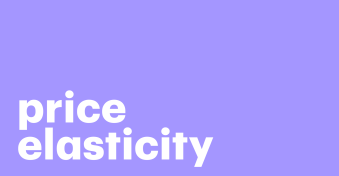You spend a great deal of effort on product development and marketing.
You launch your new service, only to discover that your pricing hinders sales.
In this guide, we’ll explain how you can boost your revenue with price optimization.
Key takeaways
- Price optimization is the process of adjusting your prices to reach business goals.
- A pricing strategy is foundational to optimizing price points and your overall strategy.
- Optimal pricing maximizes revenue, acquires new customers, and keeps up with the competition.
- Price optimization models collect and analyze real-time data.
- Document workflow management and price optimization work synergistically to maximize your sales output.
What is price optimization?
Price optimization is the process of adjusting prices to maximize sales, profit, and revenue.
Optimization requires analyzing historical data, market trends, and consumer behavior.
Additionally, you can also optimize prices relative to the competition.
In the days of spreadsheets, price optimization was an error-prone and arduous task.
Today, businesses use AI and machine learning to build evolving predictive algorithms.
Some price optimization tools enable you to set pricing that adjusts in real time.
Optimizing your price structure requires data analysis of many areas, including:
- Customer demographics and psychographics
- Customer segmentation and behavior
- Regional markets
- Historical sales
- Inventory management
- Demand
- Customer lifetime value
- Customer loyalty and churn
- Competitor analysis
- Operating costs
- Customer feedback surveys
Finding the optimal price doesn’t only come from a combination of analyses.
Your pricing strategy also leans heavily on the price elasticity of your goods and services.
Understanding price optimization and price elasticity
Price elasticity is a measure of how changing prices affect demand.
The demand for elastic products is sensitive to price changes. Inelastic goods see less impact on demand when prices fluctuate.
So, how does price elasticity of demand relate to pricing optimization? Let’s take a look at the basic formula to get a better understanding.
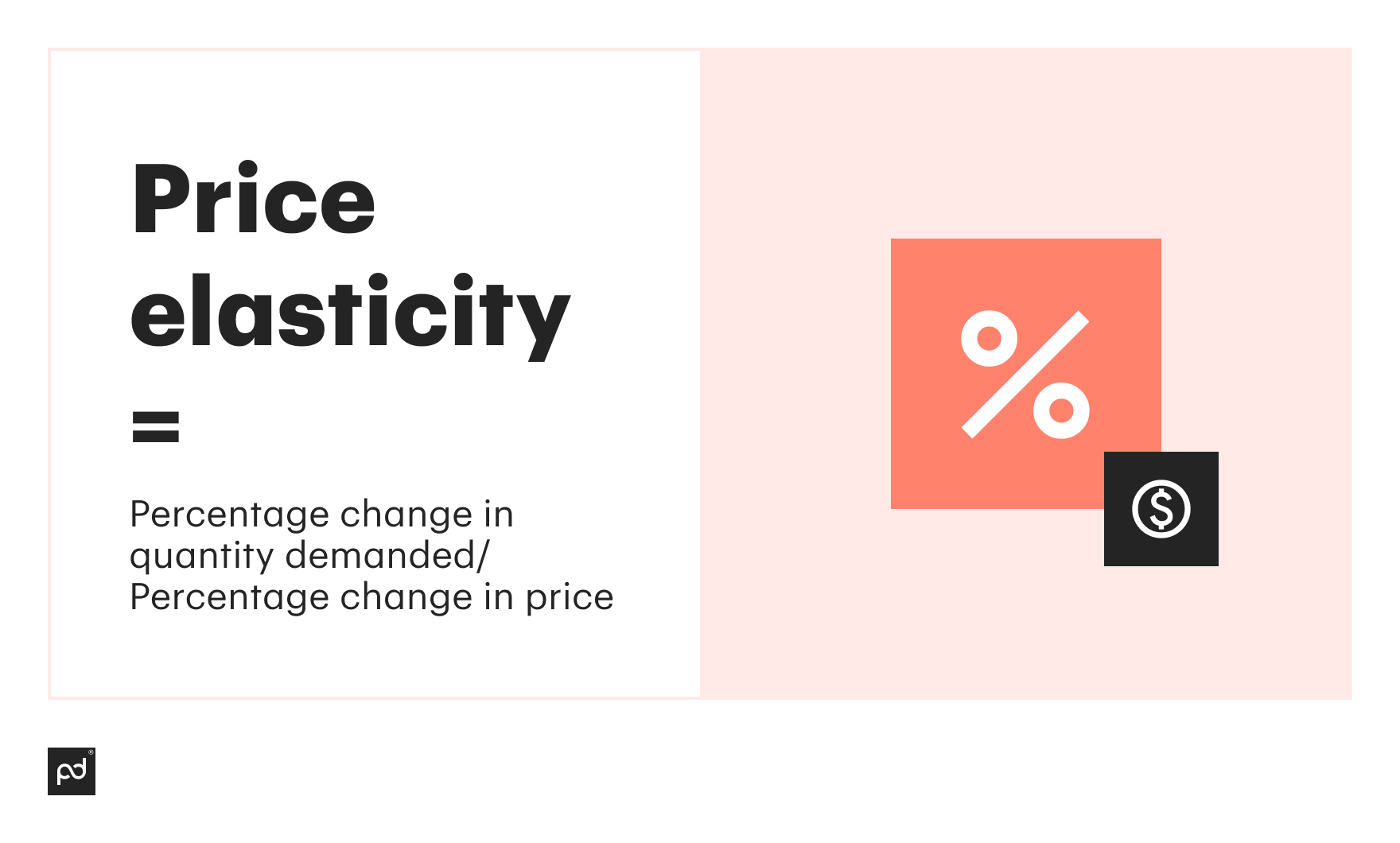
Price elasticity shows a fine balance between increasing prices and decreasing demand. However, how you achieve price optimization depends on the elasticity or inelasticity of your product.
Here are two examples to illustrate:
- Electricity supplier: People need electricity to complete their daily tasks. If prices increase by fifteen percent, demand stays roughly the same. Electricity is inelastic, making price optimization less complicated.
- Document workflow management platform: Saves time and money while handling documents. If the service increases prices by fifteen percent, some customers will cancel and choose a cheaper alternative. As prices go up, demand goes down. The Software-as-a-Service (SaaS) in this example is elastic. Compare price elasticity against any price optimization techniques.
The benefits of price optimization (when you get it right)
Achieving price optimization isn’t always straightforward. Price elasticity of demand creates a dangerous game.
The more you mess with prices, the more it affects demand. So why even bother doing it?
Well, there are plenty of price optimization benefits for those willing to put in the work.
- Improve profit margins: You find the best prices to maximize profits without hurting demand.
- Increase customer acquisition: Set price points that attract your target customer segments.
- Streamline market research: Optimization tools and techniques centralize market data for analysis.
- Gain greater customer insight: Better understanding of how price affects customer behavior.
- Save time and money: Avoid lengthy trial and error while pricing new products and bundles.
- Have better agility: An optimization strategy prepares you to react quickly to changing market trends.
- Have more satisfied customers: The Goldilocks effect generates greater customer perceived value.
- Close deals quicker: Optimization drives conversion when presenting pricing to clients.
Understanding price optimization models and pricing strategies
Price optimization and pricing strategies are often confused as being synonymous.
While related, they’re two different sides of the pricing process.
A pricing strategy is the approach you take with your pricing.
Questions that you may wish to consider when coming up with a pricing strategy include, “Should I add a set percentage above production cost?” and “Should I undercut competition?”.
Organizations consider many factors when developing pricing strategies, including market demand and competition.
Price optimization is the tools and techniques you apply to your pricing strategy.
Once you have pricing objectives, you must find a path to setting the best price to achieve those goals.
Price optimization models
Mathematical models power price optimization models. You feed machine learning algorithms with constant data.
They create price points that maximize profits and keep your products in demand.
There are various types of price optimization models.
Which price optimization model is best depends on your industry and pricing strategy.
Here are two of the most common optimization models.
Dynamic pricing algorithms
A dynamic pricing algorithm optimizes your prices in real time.
Optimization is happening in milliseconds in response to consumer behavior and market micro-trends.
Machine learning continually analyzes streaming data. It only becomes more efficient at optimization over time.
It’s likely that you’re familiar with dynamic pricing algorithms.
Ever booked a hotel or airline online? Do you notice how prices for your specific dates and destination move in unison like a flock of birds?
That’s because the dynamic pricing models power the travel industry.
When a competitor changes its price or demand changes, vendor prices re-align automatically.
This keeps each company competitive with market prices as soon as demand spikes.
Prices rise across the board. Hotels and flights are a good example of price elasticity of demand.
Dynamic pricing algorithms are also suited to businesses with limited supply.
Products may be unique, or production may have long lead times.
As supply goes down, prices increase. When supply goes up, prices go down.
Dynamic pricing identifies what consumers are willing to pay right now.
Price elasticity algorithms
Price elasticity algorithms have less to do with the market and competition.
Instead, they assess the elasticity of demand for your goods and services.
These models predict how sensitive your customers are to price changes.
Dynamic pricing automatically changes prices to fall in line with market demand.
Price elasticity algorithms inform you of trends but leave pricing decisions up to you.
As the model evolves, it becomes more accurate with predictions.
You and your team can use this information to improve revenue while avoiding major pricing mistakes.
For example, a price elasticity algorithm analyzes a ten percent increase in your basic service package.
It predicts that there will only be a three percent decrease in demand.
After looking at these numbers, you increase your prices.
That’s a net increase of 6.7 percent in revenue, all from price optimization.
Pricing strategies
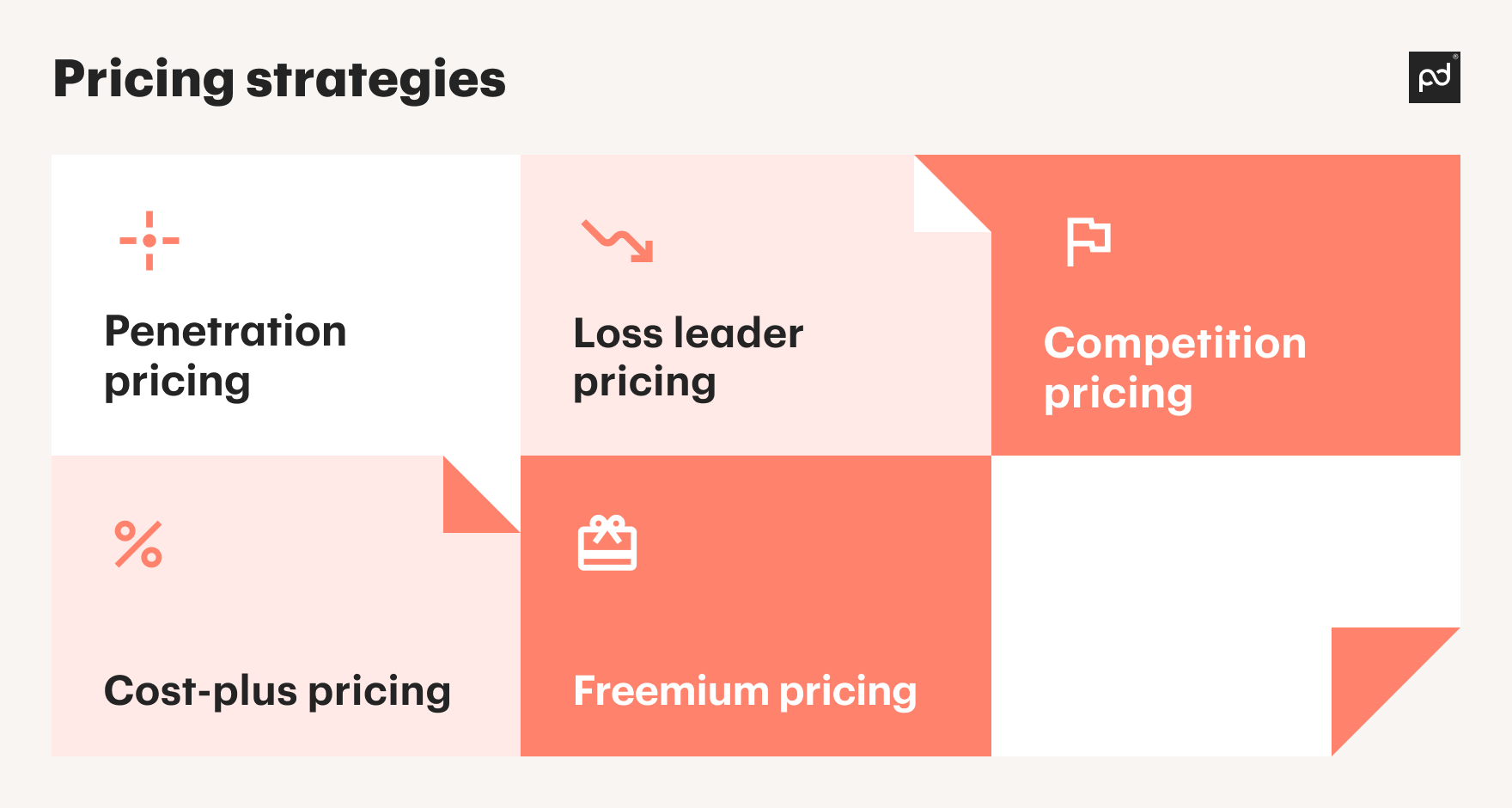
Pricing optimization is crucial to the success of any business. On its own, it’s not enough to achieve organizational objectives.
All efforts should be guided by an overall pricing strategy. There are many approaches businesses can take when setting prices.
Let’s take a look at some common pricing strategies.
Penetration pricing
The purpose of penetration pricing is right in the name. It’s a pricing strategy for newcomers to penetrate the market.
How is this accomplished? Penetration pricing is done by offering lower prices than the competition.
Undercutting competitors will drive customers to your brand in the short term.
You’ve now acquired subscribers, but it comes at a significant cost.
The competition may lower prices in response.
Soon, it’s a downward spiral to the basin of minimal margins. You may even be selling products at a loss.
A penetration strategy causes disruption but at the cost of short-term revenue.
Hopefully, some customers will stick with your brand in the long run.
Whether this happens or not depends on whether you can demonstrate value to consumers.
If anything, you’ll create a temporary shockwave of attention.
Loss leader pricing
Loss leader pricing is when a business strategically sells a product or service at a loss.
The goal is to acquire a larger market share. You then compensate for losses by cross-selling and upselling.
Loss leader pricing is a tailored form of penetration pricing.
The main difference is that you must sell at a lower price than production costs.
Loss leader pricing is a strategy used in retail and ecommerce by behemoths like Amazon.
In general, businesses use this approach to squash the smaller competition.
Large companies can afford to offset these losses. Smaller ventures either fail to compete or risk running with unsustainable losses.
Competition pricing
Some businesses take a pricing strategy that focuses on the market rate. A competition pricing approach doesn’t concern margins or production costs.
The primary driver is the current market rate for goods and services. Competition pricing provides a target price range for your portfolio of products.
You can price items slightly above or below that of your competitors. This keeps your prices close enough to what customers are willing to pay.
However, it still maintains a differentiation.
Competition pricing helps you gain an advantage by offering greater value at similar prices.
If customers believe you offer more for a similar price, you’ll win their business.
Cost-plus pricing
Some companies prefer a straightforward approach to pricing. Cost-plus pricing is when you set prices based on production costs.
You add a set percentage to the cost of each item, guaranteeing a profit margin across the board.
You can observe cost-plus pricing in retail and restaurants. These businesses are shifting physical items.
If raw materials and production costs go up, the bill that the consumer has to pay also rises.
Cost-plus pricing ensures profitability if it can maintain adequate demand.
You can adjust the margin percentage for optimization purposes.
Freemium pricing
Believe it or not, there’s a pricing strategy where you charge customers absolutely nothing!
Service providers and subscription-based businesses can opt for a freemium pricing strategy.
Why do this?
To acquire customers and then convert some of them into paying subscribers.
Offering freemium products can help lower customer acquisition costs (CAC).
Free trials and products can do the heavy lifting for promotion.
They enable you to reduce your marketing and ad spend. At the same time, your products can speak for themselves.
It’s an organic lead nurturing process. Users who enjoy your freemium service will likely sign up for a paid tier if they need upgraded features or functionality.
So, even though you’re offering a free product, you still need to optimize your premium price points.
Real-world price optimization examples
Okay, so price optimization sounds great in theory.
We’ve discussed a few examples already, but let’s look at a few more optimization use cases.
Insurance
Car insurance and other insurance types use price optimization techniques.
Consumers today have easy access to aggregators for price comparisons.
Each policy varies depending on the situation. Insurance providers need competitive price points that offer value and provide premium options.
Real estate
Estate agents need to know what price to list a property when it first goes on the market.
They want to get plenty of attention from consumers but also get the best price for the seller.
A competitive pricing strategy is a common approach. However, optimization modeling helps spot market gaps and low valuations.
Price optimization ensures the seller gets what home buyers are willing to pay.
Short-term rentals
Thanks to platforms like Airbnb, short-term rentals are a rapidly growing industry.
Customers are looking for stays from a single day to several months.
A pricing strategy must account for length of stay, geographic location, and seasonality. It must also adjust prices according to demand.
Short-term rental companies use dynamic pricing algorithms to analyze big datasets.
Prices adjust in real-time to reflect a competitive market rate for customers booking in various locations.
Price optimization helps customers find what they’re looking for at a price they’re willing to pay.
Some more tips for getting price optimization right
So, we’ve convinced you that price optimization is necessary. How do you best go about using price optimization to maximize profits?
Follow some of these best practices and use optimal prices to stay ahead of the competition.
Be data-driven
Price optimization isn’t about guessing or trial and error.
You can’t just look at one or two competitors and then pluck price points out of thin air.
Optimization only works when pricing decisions are data-driven.
Use price optimization tools that let you collect a variety of data.
Use data visualization tools to spot trends and identify opportunities.
You want customizable machine learning outputs that let you align strategy with objectives.
This lets you optimize for your market and customer segments.
Use modeling tools to track the price elasticity of demand.
Having real-time elasticity data helps you prepare for demand changes with price adjustments.
Set clear objectives defined by your goals and constraints
Remember, the “optimal price” needs context.
You define what’s best for your company by first setting clear goals. Business goals may be to gain market share or increase profit margins.
Price optimization objectives operate under the constraints of your industry and business model. Identify constraints to guide your pricing approach.
For example, most B2B products are relatively elastic.
If one provider raises the price significantly, customers will find cheaper substitutes.
In this case, it doesn’t make sense for a B2B company to set a goal of increasing profit margins past a reasonable point.
In contrast, a promoter for a concert venue is selling products that are one of one.
The promotion company isn’t constrained by the competition when setting ticket prices.
They can set an objective that balances margin against consumer demand.
Understand your customers and what “value” means to them
There’s a clear relationship between pricing and marketing.
However, there can be a disconnect between what you and your clients perceive as “value.”
How do you alleviate this? Ask your customers what they think.
Do this with market research, such as customer satisfaction (CSAT) and feedback surveys.
You can also use social listening tools to compile qualitative data from user reviews and testimonials.
Use this data to build your value metric.
If you offer an affiliate marketing service, that can result in clicks.
For document workflow management, the value might be the average time it takes to generate a contract.
Focus on what features hit that value button for your target audience.
In this way, you can quantify value and apply that to your pricing optimization strategy.
Choose a pricing strategy, set prices, and continuously monitor
A pricing strategy lays the groundwork for optimization.
You must pick a pricing approach that fits your business and aligns with its goals.
Are you a startup entering a growing, competitive market?
Do you sell a product with high production costs and long lead times?
Whatever the specifics, a pricing strategy like penetration will bring order to the chaos of price setting.
Once the ball is rolling, the real optimization can begin.
As data streams into your algorithms, adjust your prices accordingly.
Don’t stop pricing optimization just because you find a happy medium.
Use price optimization tools to track data and re-evaluate your price points.
Be flexible and make changes when necessary
Market situations can change overnight.
You can’t afford to get left behind because your price points are set in stone.
Regular pricing optimization processes keep you agile and allow you to respond to rapidly changing situations.
As long as you have access to up-to-date data, you can adjust your prices accordingly.
It’s not also about market upheaval. More likely, an insidious evolution will take place.
Always let your pricing strategy and your algorithms be your guide. Have your pricing manager and team monitor consumer behavior and demand trends.
As soon as the signs indicate change is necessary, listen to what the data is telling you.
Be flexible and willing to re-optimize prices as and when needed.
You may also find that prices are where they need to be, but your sales process gets in the way.
Proposal software helps your team stay on top of every lead in real time.
A library of 1000+ templates lets you generate customizable documents in no time. Boost your pricing strategy by closing 87% more deals per month.
Price optimization is one crucial step toward winning more business
The price points of your products and services are a real differentiator. It builds perceived value among your customers.
Price optimization models automate data analysis so your team makes better decisions.
A price optimization strategy is key to getting the most out of your marketing and sales efforts.
Speaking of ROI, sales automation software from PandaDoc helps maximize your pricing strategy.
Our platform connects to your CRM and turns your sales funnel into a self-driving vehicle. (Don’t worry, it’s not like those self-driving cars).
With PandaDoc, you’ll streamline your sales process.
Cut document creation time in half and increase your close rates by 36 percent.
Your reps will save time while generating branded agreements with eSignatures that process payments in no time.
Don’t waste your price optimization efforts getting sales deals tied up in paperwork.
Request a demo today and learn how PandaDoc can level up your business!
Disclaimer
PandaDoc is not a law firm, or a substitute for an attorney or law firm. This page is not intended to and does not provide legal advice. Should you have legal questions on the validity of e-signatures or digital signatures and the enforceability thereof, please consult with an attorney or law firm. Use of PandaDoc services are governed by our Terms of Use and Privacy Policy.
